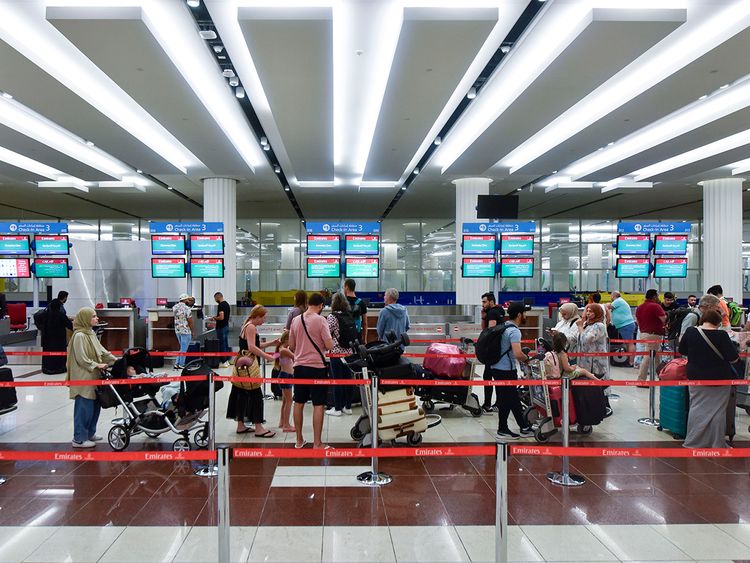Second-half of December has seen inbound and outbound fares to the UAE hitting multiple highs. UAE residents with travels plans should be waiting until mid-January to catch themselves a rate break.
UAE residents planning their first overseas trips of 2024 should wait until mid-January for the flight bookings. Because that’s when airfares are starting to show some serious declines from the current peaks on high traffic routes such as to the UK, major European cities, and the Philippines.
There are fare drops even on longer haul routes such as the US. Even those travelers planning last-minute bookings can make use of the rate dips, travel industry sources add. And the size of the rate drops? By as much as 50-60 per cent, depending, of course, on the routes, dates, etc.
By the second and third week of January, long-haul routes from the UAE will experience the biggest fare reductions after peak winter travel demand, said Malou Prado, CEO of Dubai-based MPQ Travel and Tourism. But for now, demand for flights into Dubai has been exceptional, especially from large tour groups. And the very high airfares had made it impossible for travelers based in the UAE to book last-minute flights.”
But on the Philippines-UAE routes. current rate highs will continue well into February, travel agents say. “This is because of VFR (visiting friends and relatives) traffic, and many UAE-based Filipinos are returning to the Emirates after an extended winter break,” said Malou.
Check out these rates:
- Economy Class fares (from January 15 to 29) on London Heathrow Airport to Dubai International will see a considerable drop of Dh2,410 compared to the December highs of Dh5,135 (one-way).
- Return Economy class rates from New York to Dubai will be at Dh3,519 compared to the eye-popping Dh6,487 travelers had to put up the last week of December.
- San Francisco to Dubai would be at Dh5,943 (vs. Dh7,600 in December), and flights from Boston are Dh4.276.
- Fares to European destinations will average from Dh2,722 (Paris) to Dh3,005 (Amsterdam).
- Manila to Dubai airfares will fall to Dh2,000 by end January, compared to the highs of Dh5,000 travelers were forced to pay in Q4-23.
Currently, UAE’s in- and outbound ticket rates are surfing at well over 25-50 per cent higher than what they were in September and first-half October.
After experiencing a surge of over 50 to 60 per cent compared to September-October levels, local and international airlines have enjoyed a prosperous winter season due to heightened travel demand to the Emirates during the peak winter season.
How long will low fare phase last?
So, UAE residents can pick and choose their way to more budget-friendly rates from January 15 onwards, and all the way, possibly, to March 10 or thereabouts. “There won’t be much travel demand from families with school-going children and business travel during this time, bringing about that much-needed respite from high airfares,” said Afi Ahmed, Chairman of Smart Travels.
And as a big chunk of the winter festivities end with the New Year celebrations in the country, pleasant weather and quieter business activity will keep demand and prices stable until March 10, said Afi Ahmed, Chairman of Smart Travels.
“UAE schools re-open in January, and businesses would be busy devising their yearly budgets, bringing travel demand and ticket rates prices down. These fares will remain stable for UAE-bound travel from most destinations as well.”
According to Ahmed, for a lower cost visit the UAE, the best time would be between mid-January to late February.
“We are seeing a lot of demand originating from Eastern Europe, the Mediterranean countries, and some European travelers who have moved their holidays to mid-January to early March to take advantage of cheaper fares and lower hotel rates in the UAE,” said Shanavaz Khan, founder of Trips Away.
Robust Q1-24 demand
Overall, travel will remain a top priority for residents in the UAE and elsewhere for a fourth year running.
Carlo Olejniczak, Vice-President and Managing Director for Booking.com in Europe, Middle East and Africa, “We see strong growth on the books for travel that will take place in the first quarter of next year, though a high percentage of these bookings are cancellable.”
“Given current trends, we expect consumers will continue prioritising travel over other discretionary spending in 2024.”
According to the International Air Travel Association (IATA), some 4.7 billion people are expected to travel in 2024, a high that exceeds the pre-pandemic level of 4.5 billion recorded in 2019.


